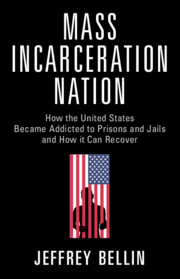 Mass Incarceration Nation
Mass Incarceration Nation from Part I - What Is Mass Incarceration?
Published online by Cambridge University Press: 03 November 2022
In 1970, the United States locked up approximately 200,000 people in state and federal prisons, with another 161,000 in local jails. The country’s incarceration rate – the number of people incarcerated as a percentage of the overall population – had been remarkably steady for decades and not that different from other Western nations, like England, France, or Germany.
To save this book to your Kindle, first ensure [email protected] is added to your Approved Personal Document E-mail List under your Personal Document Settings on the Manage Your Content and Devices page of your Amazon account. Then enter the ‘name’ part of your Kindle email address below. Find out more about saving to your Kindle.
Note you can select to save to either the @free.kindle.com or @kindle.com variations. ‘@free.kindle.com’ emails are free but can only be saved to your device when it is connected to wi-fi. ‘@kindle.com’ emails can be delivered even when you are not connected to wi-fi, but note that service fees apply.
Find out more about the Kindle Personal Document Service.
To save content items to your account, please confirm that you agree to abide by our usage policies. If this is the first time you use this feature, you will be asked to authorise Cambridge Core to connect with your account. Find out more about saving content to Dropbox.
To save content items to your account, please confirm that you agree to abide by our usage policies. If this is the first time you use this feature, you will be asked to authorise Cambridge Core to connect with your account. Find out more about saving content to Google Drive.